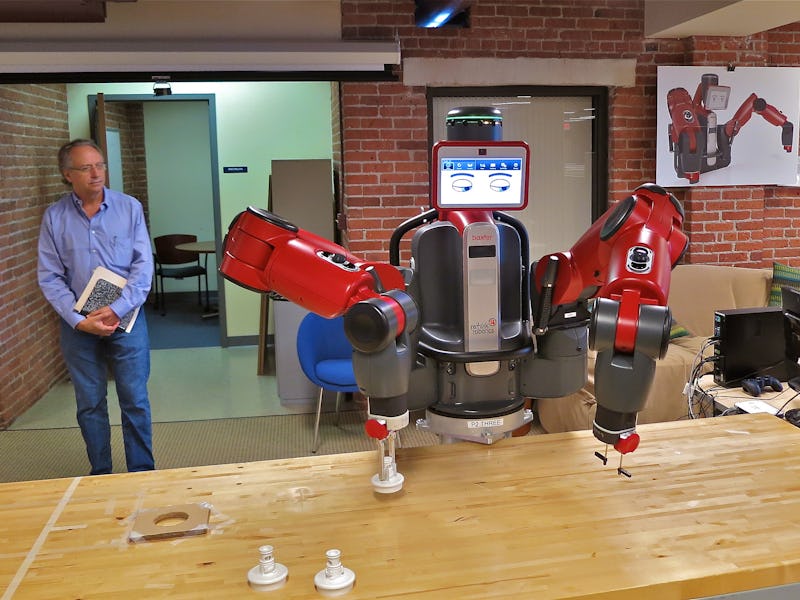A 'Psychic Robot' Algorithm Can Predict Our Actions
It could be used in robotic exoskeletons, surgical robots, artificial limbs, and vehicles.

Bioengineers at the University of Illinois at Chicago developed a mathematical algorithm that knows you better than you know yourself.
Described in a recent issue of the journal PLoS One, the software, which can be used to power a “psychic robot,” can successfully predict intended behavior.
When you’re in the middle of reaching for a coffee mug, for example, the software knows where you meant to put your hand, even if your hand gets knocked out of the way. When an action is interrupted, the brain still needs to take in and analyze visual and neural data before it can signal to the hand to resume what it was doing — a process that takes up to a tenth of a second.
The software skips all that, focusing on the end goal. “By recognizing the person’s intent, the machine could give them what they wanted, even though the person couldn’t react quickly enough to accomplish it on their own,” lead author Dr. Justin Horowitz tells Inverse.
He hopes to apply his software to machines that make movement easier, such as robotic exoskeletons, surgical robots, artificial limbs, and vehicles. “It’s not about controlling human muscle so much as letting humans control machines using their intent rather than their actions,” he says.
One application Horowitz envisions for his software is preventing cars from skidding off road after hitting a patch of ice. “The steering system could ‘know’ where it is you mean to go and control individual wheels to keep you on course,” he says. “This should be applicable to any application where a machine can react more quickly and/or accurately than the human controlling it.”
To develop his algorithm, Horowitz asked participants to reach in a particular direction, then interrupted the action by shoving them. When the participants were interrupted, their hands continued to reach in the new direction for about 150 milliseconds — until their brains kicked in and changed course. Because the intended direction was known, Horowitz was able to use those post-shove movements to identify a predictive algorithm.
The team plans to present its first application of the algorithm — an intent-controlled, robot-powered arm — at the conference Neuroscience 2015 in Chicago next week.